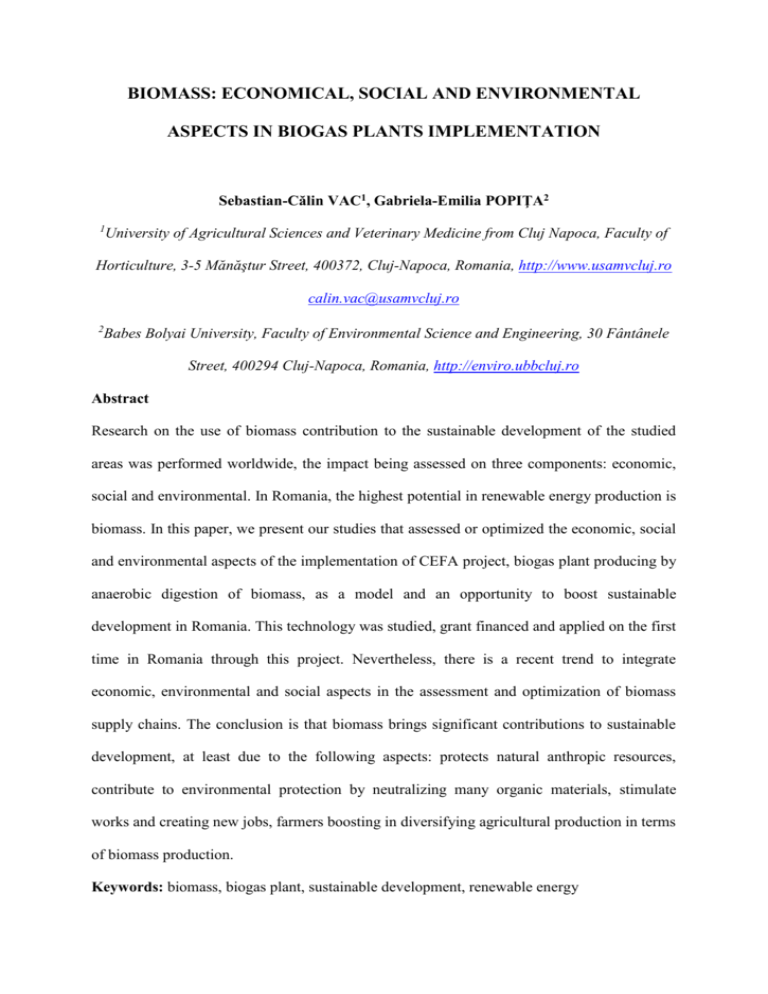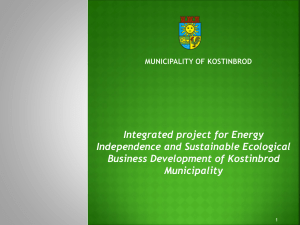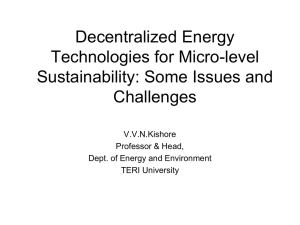Table 1Fatty Acid Compostion of Salvia species*
advertisement

BIOMASS: ECONOMICAL, SOCIAL AND ENVIRONMENTAL ASPECTS IN BIOGAS PLANTS IMPLEMENTATION Sebastian-Călin VAC1, Gabriela-Emilia POPIŢA2 1 University of Agricultural Sciences and Veterinary Medicine from Cluj Napoca, Faculty of Horticulture, 3-5 Mănăştur Street, 400372, Cluj-Napoca, Romania, http://www.usamvcluj.ro calin.vac@usamvcluj.ro 2 Babes Bolyai University, Faculty of Environmental Science and Engineering, 30 Fântânele Street, 400294 Cluj-Napoca, Romania, http://enviro.ubbcluj.ro Abstract Research on the use of biomass contribution to the sustainable development of the studied areas was performed worldwide, the impact being assessed on three components: economic, social and environmental. In Romania, the highest potential in renewable energy production is biomass. In this paper, we present our studies that assessed or optimized the economic, social and environmental aspects of the implementation of CEFA project, biogas plant producing by anaerobic digestion of biomass, as a model and an opportunity to boost sustainable development in Romania. This technology was studied, grant financed and applied on the first time in Romania through this project. Nevertheless, there is a recent trend to integrate economic, environmental and social aspects in the assessment and optimization of biomass supply chains. The conclusion is that biomass brings significant contributions to sustainable development, at least due to the following aspects: protects natural anthropic resources, contribute to environmental protection by neutralizing many organic materials, stimulate works and creating new jobs, farmers boosting in diversifying agricultural production in terms of biomass production. Keywords: biomass, biogas plant, sustainable development, renewable energy Aims The aim of this work is to reveal that biomass production and using in biogas plants is not only a renewable resource, but also a significant opportunity for sustainable development, in terms of economic, social and environment policies. Background It was estimated that biomass, as an alternative energy source, currently contribute 14% of world primary energy consumption1. Recent studies related to the renewable energy sector in Romania2 see that institutional actions together with environmental policy instruments are key factors for efficient utilization of renewable energy. Their recovery can bring a major contribution to rural development and to the progress of local communities. Both, in Romania and in the entire European Union (EU), there is an increasing interest in intensifying the production and use of biomass, to replace fossil fuels for the production of heat, electricity and transportation fuels3. Biomass usage as a source of energy is of interest because is renewable, potentially sustainable and relatively environmentally friendly source of energy4,5,6. On the other hand, research on the feasibility of investment on renewable resources reveals that the use of biomass with a high capacity plant represents one of the most profitable methods of obtaining electricity7. International organizations, such as the International Energy Agency, encourage the use of biomass waste and residues for energy production because it can generate profit, contribute to the mitigation of greenhouse gas emissions, and help communities to diversify their energy sources and achieve energy independency without threatening the world's food supply8. Research on the acceptance of the use of renewable energies in rural areas was conducted in Scotland9, France10, Greece11 or Nigeria12. The analysis was accomplished in terms of the three components of sustainable development: economic, social and environmental. Experiences related to the exploitation of biomass as an energy source were made in China13. Their results demonstrated that such projects consume agricultural residues, provide energy for local communities and increase the income of rural residents. Taking as a model the Clean Development Mechanism (CDM) of the Kyoto Protocol, in India14, or Thailand15, were conducted studies on biomass gasification projects, because they directly displace greenhouse gas emissions while contribute to sustainable rural development. But there are no studies to analyze in terms of sustainable development and the energy production from such resources. Based on these considerations and taking as a starting point CEFA project, this research aims to analyze the economic, social and environmental issues that it might have the implementation of a project of biogas production from biomass on rural areas in Romania, where such a project is conducted. CEFA project is implemented by SC Global ARM SRL in the industrial park, located on a land area of 33,462 sqm inside the village Cefa, Bihor county, Romania. The project was initiated in 2008, benefits from a grant offered by the Ministry of Environment from Romania and is still in implementation period due to bureaucratic financial issues. Basically, the project consists in construction and operation of a facility, to produce biogas by anaerobic digestion of biomass and green electricity transformation using a powerful technology applied in many other countries respecting the environmental protection, but on the first time in Romania7,16. Experimental Romania, as a member of the EU, has aligned with its policies on protecting the environment, its limited resources (fossil fuels), waste recycling, finding and promoting alternative energy sources17, the development of appropriate technologies, regional energy security, encouragement of agriculture by supporting multiple schemes and funding and development of a cyclic chain that integrates components of environmental, agricultural, industrial and social. The biomass resources, in Romania, are available in plenty, in the form18 of: municipal solid waste, animal manure, agricultural waste, wastewater sludge from wastewater treatment plants, slaughterwaste, industrial waste and, for more efficiency, it is mixed with various vegetable energy crops19 (corn silage, tetraploid rye, beets, grass silage etc.). The main important biomass resources in Romania and their biogas productivity are presented in Fig. 1: quantity (Nmc/tone) liquid manure 15 35 60 80 120 130 150 180 185 250 350 400 solid manure slaughter waste food scraps corn silage flotation unit fat meal or oilcake (rape, sunflower,… quantity (Nmc/tone) 700 800 glycerine 1200 0 200 400 600 800 1000 1200 1400 Figure 1. The amount of biogas that can be obtained from various raw materials Source: SC Global ARM SRL (2008) - Feasibility Study19 A biogas plant similar as from Cefa19 (about 4.2 MWh) can operate on basis of diversified raw materials recipes, such as: mixtures of energy crops (corn silage, tetraploid rye etc.), meals (rape, sunflower and other oilseeds), animal manure or remains etc. The provider of the installation recommended that the starting of the installation and operation, of the first year, to be made only on green table19. Considering only energy crops as feedstock, the annual volume required for biogas plant, based on technical specifications supplied by the provider, is 50,000 tons. According to NISR20, this quantity can be obtained in two corn silage annual crops capacity of 40-45 tons/ha, using an area of about 600 ha per year, or one annual crops capacity of 40-45 tons/ha, using an area of about 1,200 ha. After the first year, considering the financial aspects of the business (best cost), and the economic and environmental aspects, one of the recipes considered to be optimal is presented in Table 1: Table 1 Average annual quantities of raw materials used in the production of biogas Raw material Amount glycerine 1,000 tons/year meals (especially rape) 2,000 tons/year liquid animal manure animal waste from slaughter (containing stomach, intestines, blood) corn silage 22,000 tons/year 3,600 tons/year 30,000 tons/year recoverable wastewater containing amino acids 500 tons/year Source: SC Global ARM SRL (2008) - Feasibility Study19 The average annual production of rape, in Romania, is 2.5 tons/ha20. By cold pressing is obtained pure oil (about one-third) and meal (two-thirds). From total amount of oil, about 80% is converted into biodiesel by esterification process and the rest is pure glycerine21. So, 2,000 tons of rape meals and 1,000 tonnes of glycerine can be obtained from 6,250 ha of land cultivated with rape: - for every 1 ha rape cultivated result about 1.6 tons of meal (two-thirds) and 0.8 tons of pure oil (one-third), that means about 0.8 x 20% = 0.16 tons of glycerine; - 1,000 tons of glycerine can be obtained from 1,000 / 0.16 = 6,250 ha rape cultivated; - backwards, from 6,250 ha rape cultivated can be obtained: 6,250 x 0.16 = 1.000 tons of glycerine and 6,250 x 1.60 = 10.000 tons of meal. The difference meal, apparently left unused, can be used as a substitute for other components when they are in insufficient quantities (recoverable wastewater containing aminoacids, animal manure and slaughter waste). Using the provided data above, from about 750 ha of cultivated land can be obtained 30,000 tons of corn silage: - at a productivity of 40 t/ha, result 30,000 / 40 = 750 ha corn silage cultivated. Thus, to ensure raw material in terms of energy crops is necessary to cultivate about 7,000 hectares of land (Table 2): Table 2 Land areas that must be cultivated to ensure the raw material of energy crops (personal prossesing) Raw material Needed Quantity Worked cultivated land corn silage 30,000 tons/year 750 ha (corn silage) meals (especially rape) 2,000 tons/year 1,250 ha (rape) glycerine 1,000 tons/year 6,250 ha (same rape) Total 7,000 ha According to the Romanian Order 1182/22.11.2005 of the Ministry of Environment and Water22, in Table 3 is presented the chemical composition of the liquid animal manure: Table 3 Chemical composition of liquid animal manure Chemical composition (%) The species The amount of urine that can be collected from an N P2O5 K2O animal (liters / year) Equines 0.5 – 1.6 Traces 0.6 – 1.8 800 – 1,200 Cattle 0.2 – 1.0 Traces 0.2 – 1.0 2,000 – 3,000 Swine 0.4 – 0.5 0.05 – 0.07 0.8 – 1.0 500 – 900 Source: Romanian Order 1182/22.11.2005 of the Ministry of Environment and Water22 Taking into consideration an average of the figures above, a quantity of 22,000 tons / year of liquid animal manure, can be obtained from: - 22,000,000 / 1,000 = 22,000 equines, or - 22,000,000 / 2,500 = 8,800 cattle, or - 22,000,000 / 675 = 32,590 swine. Considering the chemical composition described above, to get a chemical balanced compost from the anaerobic fermentation, that will return to the cultivated areas as fertilizer, is appropriate to use liquid animal manure from all 3 categories, in the fermentation process. According to NISR20, in Romania the average size of farms in the EU-27 is 14.3 ha and 3.45 ha. The 7,000 ha required to obtain energy crops for biogas plant operation at CEFA, assume the exclusive involvement of over 2,000 farms in the North-West of Romania, in the 522,482 total of the region, as follow: - 7,000 / 3.45 = 2,029 individual farms; - 7,159,000 workers / 3,856,000 farms = 1.86 workers/farm; - 1.86 * 2,029 farms = 3,774 individual persons working. Regarding farm animals, it can made the following estimates: - 22,000 equines / (73,456 equines NW / 522,482 farms NW) = 156,480 equines farms NW, over the 49,980 total of the region (about total of NW and Center Regions together); - 8,800 cattle / (347,021 cattle NW / 522,482 farms NW) = 13,250 cattle farms NW, in the 119,444 total of the region; - 32,590 swine / (688,256 swine NW / 522,482 farms NW) = 24,750 swine farms NW, in the 204,767 total of the region. Results and Discussions 1. All the above calculations are made for the operation of a biogas plants that generate 4.2 MWh! And it could be installed at least a few hundred of MWh in all North-West Region of Romania.Extending the implementation of similar projects, that benefit absolutely similar and necessity of their placement in rural or peri-urban areas (i.e. close to the raw material, both rural agriculture and municipal waste and industries, and away from heavily populated areas), do nothing but multiply these benefits to all stakeholders, which translates into an important contribution to the sustainable development: fostering agriculture, supporting Small and Medium-sized Enterprises (SMEs), benefits to the environment, social education and benefits. Consequently, it can be appreciated that such businesses stimulates the work in agriculture. From this point of view, it should be mentioned that the entire North-West Region of Romania area has a high agricultural potential and 6 times lower productivity than the European average, thus fulfilling all the conditions for an intensive energy crops, with low climate sensitivity given that in the last 20 years the uncultivated agricultural land in Romania is very extended23,24. 2. At the same time, energy crops (corn silage, tetraploid rye, soybean, rape, sunflower, beet) is an important business opportunity for farms located in the vicinity of investment place, diversification of production, reduction of dependence on fodder crops and incomes growth for both suppliers of agricultural products as well as producer of energy from biogas. 3. On the other hand, following the process of obtaining anaerobic biogas, a quality organic fertilizer is been derived18, which should be used as fertilizer in agriculture (sludge fermentation) which is rich in minerals, namely: phosphorus (P2O5), potassium (K2O), calcium (CaO) and magnesium (MgO). This minerals composition is shown in Table 4: Table 4 The average composition of sludge fermentation fertilising substances Dry matter (DM) Organic Dry matter N tot. P 2O 5 K2O CaO MgO pH % / Kg sludge (DM) 10 62 % in DM % in DM % in DM % in DM 8.3 13 7.7 Source: SC Global ARM SRL (2008) - Feasibility Study19 4.3 8.5 % in DM 0.87 At an estimated required amount of 50 tons of fertilizer/ha/year, it follows that will be required an agricultural land area of approximately 440 ha to capitalize the amount of the produced fertilizer. After removal of the fermenter, the effluent may be processed by mechanical separation to yield a solid phase and a liquid organic substance commonly known as "filtrate". The solid phase is rich in fibber, a peat moss with similar physical characteristics which may be used to improve the soil. The liquid phase, a stabilized organic solution, has a high value as a fertilizer. It consists of a combination of nitrogen, phosphorus and potassium 3 – 4.5% (dry matter) and can be spread directly on the cultivated land. The ammonia content of the "filtrate" is up to two times higher than the stored manure (not fermented). Fermentation increases the uptake of nitrogen over normal values of 30-60%, not decrease the phosphate absorption, its assimilation degree remained at 50% and the potassium carbonate is absorbed at a rate of 75-100%. Due to the fact that ammonia is slowly released, immediately after application to the soil, if the "filtrate" is not properly managed, there is the risk to a quickly evaporation from the composition of the "filtrate" in comparison with the unprocessed manure. The correct application of the dispersion has to be made as close as possible to the ground and preferably by direct injection into the ground, in which case the ammonia risk of loss is very low. Successful applications include the use of anaerobic fermentation residue as fertilizer on crops, as an amendment to improve soil and as additives in aquaculture. 4. From the combustion plant of the engines results flue gas, in the form of carbon oxides (CO: 650 - 1,100 mg/m3N), nitrogen oxides (NO2: 150 - 270 mg/m3N) and sulphur residual oxides (SO2: 80 - 110 mg/m3N), which are emitted into the atmosphere as exhaust gases19. All these values are within the limits prescribed by law 104/201125. Still, to minimize SO2 emissions, biogas passes through a biological desulfurization process. The chimney for the flue gas dispersion in the atmosphere has a height of 10 m. At a nominal operating under the two gas engines a volume of about 1,568 biogas Nmc/h, respectively 37,632 Nmc/day, is consumed. Maximum emission values are achieved only when the engine starts and stops. In order to reduce time to reach the motors operating temperature, they have electric preheating cooling water. The conclusion that can be drawn is that the flue gas emissions are far below the minimum allowed according to the current legislation. Conclusions The investment project to CEFA started in 2008, the year of its release, as the first project of producing electricity from biomass in Romania with biogas production as intermediary. The anaerobic digestion technology, at that time, was for the first time studied, grant financed and applied through this project in our country. Even today, when some similar companies try to implement or use similar technologies, the project presents many elements of originality, by its own uniqueness at a time, by exploiting the technology at a very low level in Romania at the moment, with all the benefits that it entails. Therefore, it is desirable that this approach, absolutely original and innovative in Romania, to be taken from as many investors and transformed in a short time in successful recipe, both economically, and in terms of social and environmental policies. Renewable energy is an area that promises reliable investment for sustainable development in Romania, at least due to the following aspects: stimulation works to protect the environment and balancing the ecosystem to diversify agricultural production in terms of biomass production, infusion of capital in rural areas and creating new jobs, development of competitive markets, farmers boosting in accessing grants and funding for sustainable development. All the above mentioned aspects can help to develop and stabilize the country's economy, mainly in rural areas, making its contribution to the conservation of both natural and healthy environment. References 1. *** Infomediu Europe. Journal of Environment and Ecology, http://www.infomediu.eu, 2013 2. S. E. Colesca, C. N. Ciocoiu: An overview of the Romanian renewable energy sector. Renewable and Sustainable Energy Reviews, 24: 149-158, 2013 3. M.F. Demirbas, M. Balat, H. Balat: Potential contribution of biomass to the sustainable energy development. Energy Convers Manag, 50: 1746–60, 2009 4. D.L. Klass: Biomass for renewable energy fuels and chemicals. Elsevier, 1998 5. R.E.H. Sims: Bioenergy options for a cleaner environment in developed and developing countries, Elsevier, 2004 6. A. Steinhauser: Biogas from waste and renewable resources. Dieter doublein, WileyVCH, 2008 7. S.C. Vac: Economic and financial analisys of renewable sources of energy. Academic Press Cluj-Napoca, 2014 8. IEA Bioenergy: Potential contribution of bioenergy to the world's future energy demand. Paris: OECD/IEA, 2007 9. A.H.M. Shamsuzzoha, A. Grant, J. Clarke: Implementation of renewable energy in Scottish rural area: A social study. Renewable and Sustainable Energy Reviews, 16(1): 185-191, 2012 10. B. Gabrielle, L. Bamière, N. Caldes, S. DeCara, G. Decocq, F. Ferchaud, C. Loyce, E. Pelzer, Y. Perez, J. Wohlfahrt, G. Richard: Paving the way for sustainable bioenergy in Europe: Technological options and research avenues for large-scale biomass feedstock supply. Renewable and Sustainable Energy Reviews, 33: 11–25, 2014 11. K. Patlitzianas, K. Karagounis: The progress of RES environment in the most recent member states of the EU. Renewable Energy, 36(2): 429-436, 2011 12. S.O. Oyedepo: Towards achieving energy for sustainable development in Nigeria. Renewable and Sustainable Energy Reviews, 34: 255–272, 2014 13. Y. H. Zheng, Z. F. Li, S.F. Feng, M. Lucas, G.L. Wu, Y. Li, G.M. Jiang: Biomass energy utilization in rural areas may contribute to alleviating energy crisis and global warming: A case study in a typical agro-village of Shandong, China. Renewable and Sustainable Energy Reviews 14(9): 3132-3139, 2010 14. P. Purohit: Economic potential of biomass gasification projects under Clean Development Mechanism in India. Journal of Cleaner Production, 17: 181–193, 2009 15. P. Parnphumeesup, S.A. Kerr: Stakeholder preferences towards the sustainable development of CDM projects: Lessons from biomass (rice husk) CDM project in Thailand. Energy Policy 39: 3591–3601, 2011 16. P.R. Venkateswara, S.S. Baral, R. Dey, S. Mutnuri: Biogas generation potential by anaerobic digestion for sustainable energy development in India. Renewable and Sustainable Energy Reviews 14: 2086–2094, 2010 17. *** Law no. 220/2008 on establishing the promotion system of energy production from renewable energy sources 18. *** GD 1844/2005 updated, on the promotion of biofuels and other renewable fuels for transport, MO No. 44/2006 19. *** SC Global ARM SRL: Feasibility Study “Industrial Complex for biogas production and transforming it into electricity". CEFA, Bihor County, Romania, 2008 20. *** National Institute of Statistics Romania (NISR): General Agricultural Census 2010, http://www.insse.ro/cms/files/RGA2010/ 21. *** Operational Programme: Romania-Bulgaria Cross-Border Cooperation Programme 2007-2013, Biofuels – Source of common sustainable development in the cross-border cooperation area (http://biofuels.dbioro.eu/rapita.php) 22. *** Order 1182/22.11.2005 of the Ministry of Environment and Water, on the Code of Good Agricultural Practice for the protection of waters against pollution caused by nitrates from agricultural sources 23. S.C. Vac, C.B. Pocol, C.E. Popiţa: Renewable Energy – Investment for Sustainable Rural Development in Romania. Bulletin UASVM Horticulture, 70(2): 399-406, 2013 24. *** Regional Development Agency North-West, Regional Development Plan 2014-2020, www.nord-vest.ro 25. *** Law no. 104/2011 on ambient air quality








